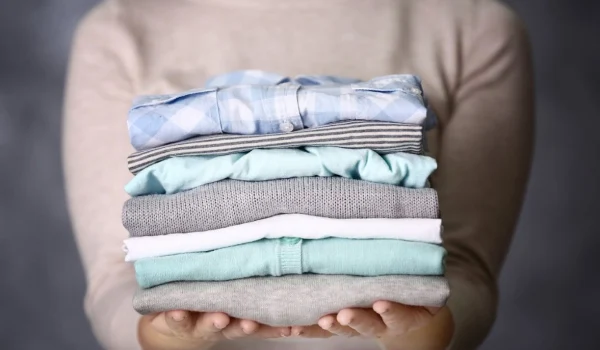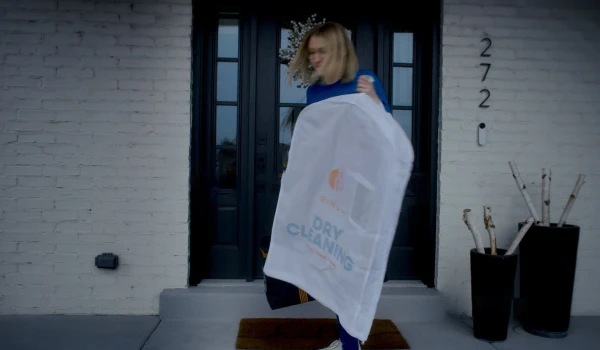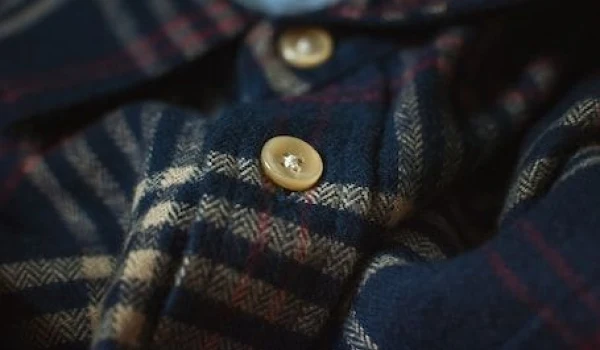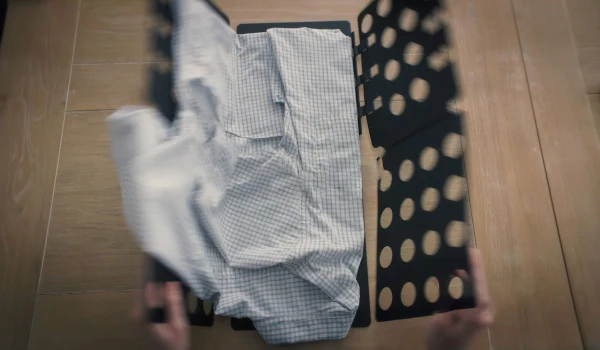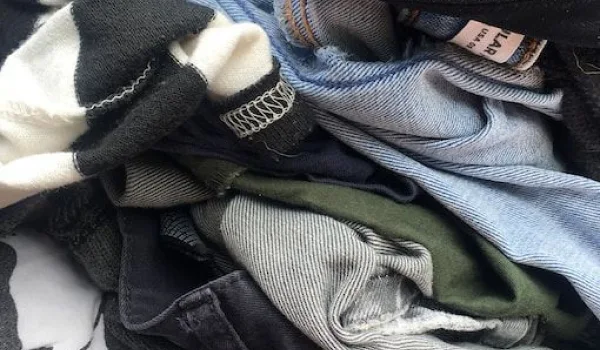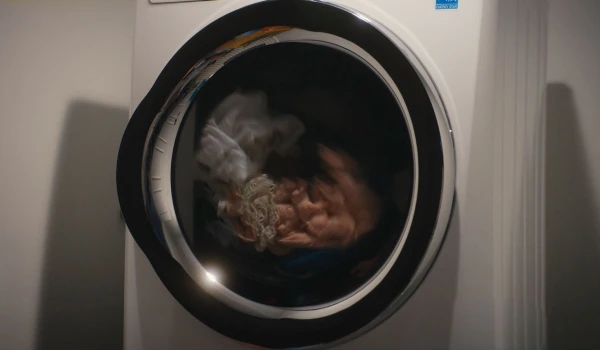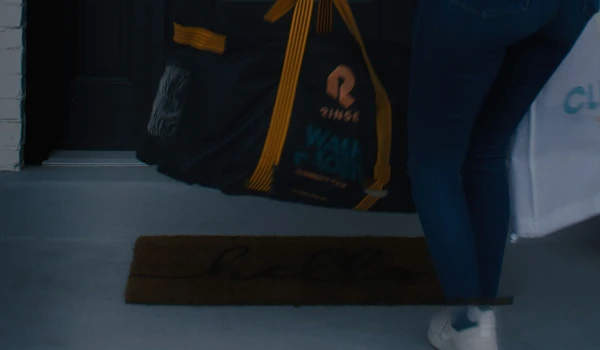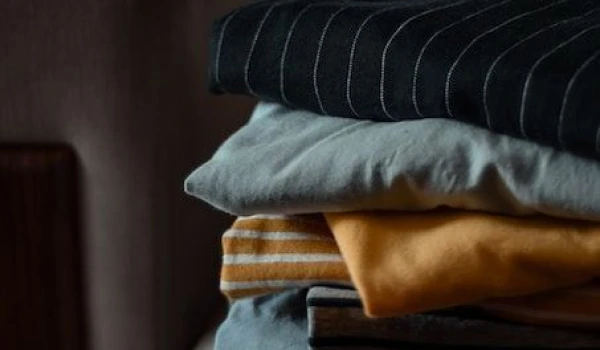Introduction
As warm weather arrives, so do moths. But we have some even worse news: moth larvae are most likely eating away at your clothing at this very moment.
They particularly love to feast on a cashmere sweater but enjoy silk, cotton, feathers, shearling, and lambswool just as much. If you suspect a moth infestation in your wardrobe, your next plan of action is learning how to get rid of these pesky insects for good.
In this guide, we teach you how to get rid of moths in your closet. But before that, let's look at some ways to identify a moth infestation.
How to Identify Moths in a Closet
How do you know if you need to put out a moth trap or two? Here are some signs to look out for:
-
Small Holes in Your Clothing: These are the result of moth larvae feeding on fabric.
-
Presence of Adult Moths: Adult moths are often found flying around, especially near lights.
-
Larvae Casings: Moth larva shed their skin as they grow. You might see these casings in your closet.
-
Webbing: Some types of moths create webs as they feed on fabric. These can be seen in your closet, particularly in corners or along the edges of clothing.
There are also different types of moths to be aware of, such as:
-
Clothes Moths: These are the most common type and usually have a golden color with reddish hairs on their head. They're about 12 mm to 17 mm in length.
-
Pantry Moths: An adult pantry moth is half an inch in length and may have beige or gray wings. As their name suggests, they tend to infest food storage areas. A common symptom of pantry moths is yellow or brown larvae crawling on shelves or in food.
-
Carpet Moth: A carpet moth is attracted to natural carpet fibers. If you see over five carpet moths in one room, it's a safe bet to say you have an infestation. These moths have a wingspan of 14 to 18 mm.
-
Webbing Clothes Moth: A webbing clothes moth is found worldwide and has a shimmery gold or cream body. Its larvae create silk webs, which is how the moth gets its name.
-
Casemaking Moth: Casemaking moths are buff-colored with wings a quarter inch long. Their forewings are brown and have three dark spots.

5 Steps to Get Rid of Moths in Closets
Getting rid of moths in your closets can be a bit daunting. But take it in a stepwise manner, and it can be manageable. Follow these steps for at-home pest control.
Step 1: Find Where the Moths are Coming From
The first step to eradicating the moths from your closet is to locate the source of the infestation. Look for any areas where the moths may be laying eggs. Check for any signs of larvae or silk webs.
If you find moths crawling over a garment, put it in a sealed plastic bag. A highly infested garment is often surrounded by other infested items. Check around and see where the moths are hiding.
Step 2: Clean Out Your Closet
Whichever clothing item you find with moth larvae, put it in a plastic bag. You can use plastic trash bags for this.
Choose a warm and sunny day to clean out your closet. Start by taking everything out of your closet and thoroughly vacuuming the shelves, corners, and walls.
Use a crevice tool to get into all the small spaces where larvae may hide. Then, use a damp cloth to wipe down all surfaces. Doing this will remove every last moth egg or larva from your closet.
Step 3: Treat All Infested Clothes
There are different ways to treat infested clothes. Both clothes moths and pantry moths are sensitive to low temperatures. Put the plastic bags filled with clothes in the freezer for 72 hours. It will kill the adult moths and eggs.
Another way to deal with moths and their larvae is to wash your clothes in hot water. Put all your infested clothes in the washer and run a hot cycle.
Step 4: Discard Infested Items
Sadly, some clothes and items may be too infested to salvage. If you can't bear to part with them, get in touch with a professional pest control company. They may be able to treat your items and remove the infestation.
But if that doesn't work out, you'll have to discard those clothes. Put them in a sealed plastic bag and throw them in the garbage.
Don't forget to discard any items that are near the infested clothes. These may be accessories, bags, shoes, or even cloth baskets.
Step 5: Use Natural Remedies and Insecticides
You can also use natural remedies or an organic moth killer to repel moths and prevent further infestations. Moths are particularly sensitive to strong scents such as cedar oil, lavender, and peppermint. You can make sachets out of these scents and place them in your closets or storage bags.
Naphthalene and 1,4-dichlorobenzene are also toxic to moth larvae and adult moths. These chemicals are often found in mothballs and moth crystals. Keep a mothball or a moth crystal in your closet or wardrobe to deter moths from laying eggs. It's a potent moth killer that can kill the Indian meal moth, webbing clothes moth, house moth, casemaking clothes moth, and even the carpet moth.
Be careful when using mothballs and crystals, though. Naphthalene is flammable and should be kept away from heat sources. 1,4-dichlorobenzene also poses health risks, so you may use camphor as an alternative.
If you prefer natural remedies, try using pheromone traps. These traps contain a synthetic version of the female moth's sex hormone, attracting male moths and trapping them.

How To Prevent Moths from Coming Back
You put a pantry moth trap or used a moth repellent, and it worked. Congratulations! Now, you have to prevent the moths from coming back.
Here are some ways to keep moths away:
-
Store your clothes properly. Make sure they are clean and dry before storing them in airtight bags or containers.
-
Store wool garments with cedar blocks or chips. Cedar oil is toxic to moth larvae, so it's an excellent natural remedy.
-
Put lavender sachets in your storage bags and closets. They have a calming scent for us, but it's repulsive to moths in their larval and adult stages.
-
Inspect your closet regularly. Look for larvae, too. Put your special garments in a hanging bag to keep moths at bay.
-
Do not store dirty items. These are food sources for moths.
-
Don't store delicate items in cardboard boxes. Moths can easily chew their way in.
-
Vacuum your closet or wardrobe regularly. It will help remove any eggs, larvae, or adult moths.
-
Place mothballs in your closet. Use our guide to learn more about them.

Protect Your Clothing with Rinse
One of the reasons you see moths in your closet is improper washing and drying. The moist environment is the perfect breeding ground for moths. Why make your home susceptible to pest infestation when you can use a service like Rinse to ensure your clothes are cleaned and stored properly?
We use eco-friendly detergents to clean your clothes. Next, we dry them completely before putting them in a storage bag.
Even better, we offer dry cleaning services since that may be the only way to clean certain fabrics. Our dry cleaning services can help you save money on mothballs, cedar blocks, and other preventive measures.
Since we offer pickup and delivery, you don't even have to leave your home to keep your clothes clean. You can just drop us a text, and we'll pick up your laundry from your doorstep.
Contact us at Rinse today to see our skill in action.




